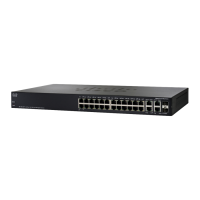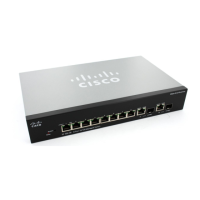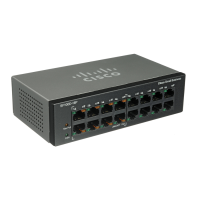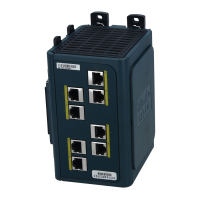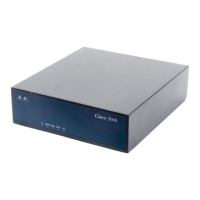VLAN Management
Voice VL AN
220 Cisco Small Business 200, 300 and 500 Series Managed Switch Administration Guide (Internal Version)
13
STEP 1 Click VLAN Management > Voice VLAN > Auto Voice VLAN.
The Operation Status block on this page shows the information about the current
voice VLAN and its source:
• Auto Voice VLAN Status—Displays whether Auto Voice VLAN is enabled.
• Voice VLAN ID—The identifier of the current voice VLAN
• Source Type—Displays the type of source where the voice VLAN is
discovered by the root device.
• CoS/802.1p—Displays CoS/802.1p values to be used by the LLDP-MED as
a voice network policy.
• DSCP—Displays DSCP values to be used by the LLDP-MED as a voice
network policy.
• Root Switch MAC Address—The MAC address of the Auto Voice VLAN root
device that discovers or is configured with the voice VLAN from which the
voice VLAN is learned.
• Switch MAC Address—Base MAC address of the device. If the device's
Switch MAC address is the Root Switch MAC Address, the device is the
Auto Voice VLAN root device.
• Voice VLAN ID Change Time—Last time that voice VLAN was updated.
STEP 2 Click Restart Auto Voice VLAN to reset the voice VLAN to the default voice VLAN
and restart Auto Voice VLAN discovery on all the Auto-Voice-VLAN-enabled
switches in the LAN.
The Voice VLAN Local Table displays voice VLAN configured on the device, as
well as any voice VLAN configuration advertised by directly-connected neighbor
devices. It contains the following fields:
• Interface—Displays the interface on which voice VLAN configuration was
received or configured. If N/A appears, the configuration was done on the
device itself. If an interface appears, a voice configuration was received from
a neighbor.
• Source MAC Address— MAC address of a UC from which the voice
configuration was received.
• Source Type— Type of UC from which voice configuration was received.
The following options are available:
- Default—Default voice VLAN configuration on the device
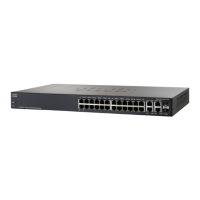
